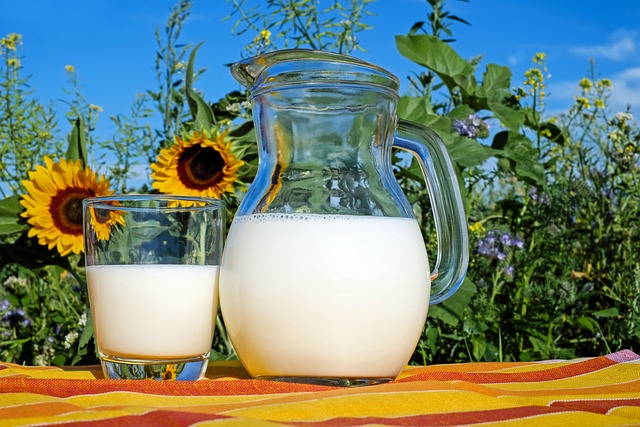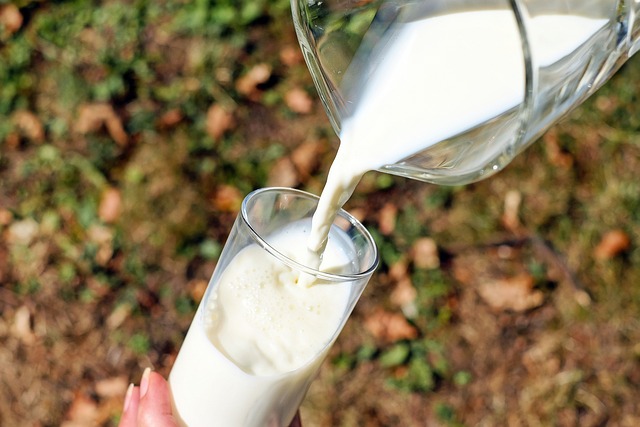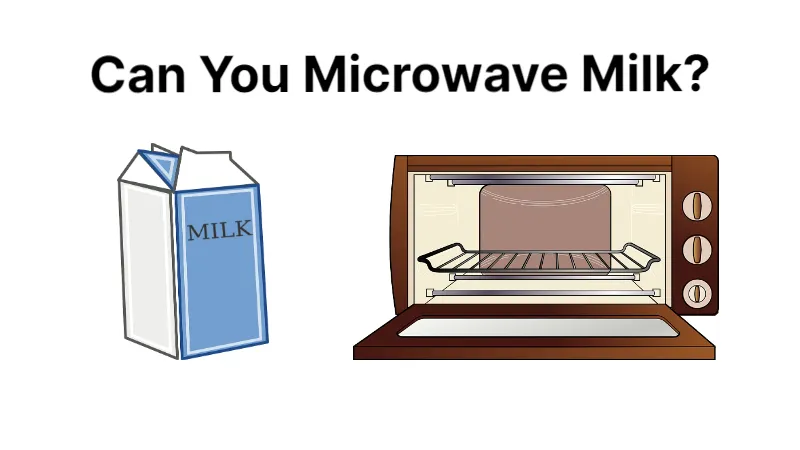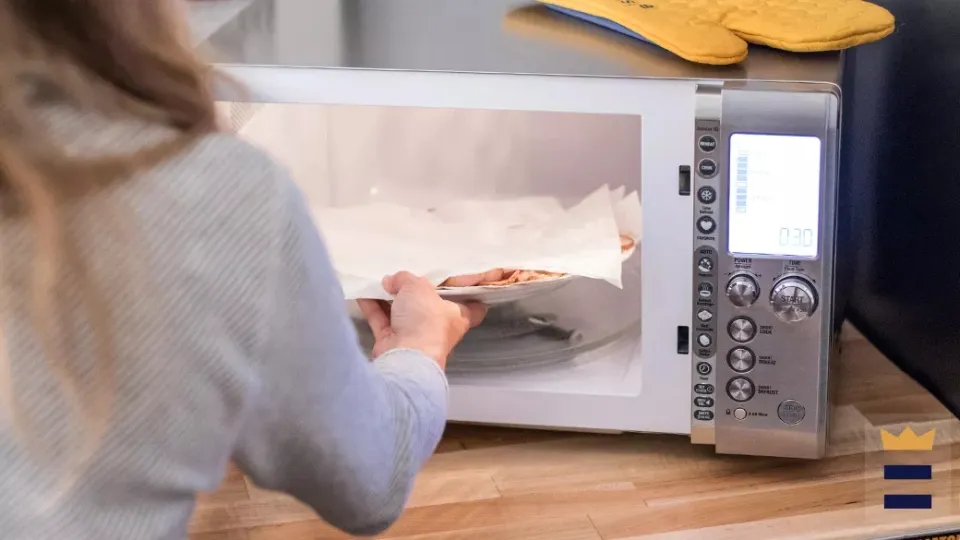Do you wonder if you can microwave milk without overheating and save its nutrients? If done properly, yes. What about infant formula and milk, though? Read on to discover.
Can You Heat Milk in Microwave?
Yes, you can microwave milk as long as you follow the proper procedures, is the quick response.
To improve milk’s temperature by removing its chill, the microwave is used to warm or heat it up.
You are probably aware of how crucial ingredients’ room temperature is. So, this kitchen device aids in bringing liquids to room temperature, including cold milk.
However, you shouldn’t boil room temperature or raw milk in a microwave. For milk to be handled properly, the brief boiling time is insufficient.
Pour milk into a microwave-safe container and re-stir it frequently while heating it for 15 seconds at a time.
Never turn the microwave’s power up past 60%; instead, aim for a medium-high setting.
Always take care of not burning yourself by using oven mitts and checking the temperature of the milk before drinking it.
Is it Safe to Microwave Milk?
The most frequent query from milk drinkers is whether it’s okay to microwave milk.
The answer is yes, but heating milk comes with some risks. All will be well, though, if you exercise caution and adhere to the advice provided below.

Milk Can Overflow
Make sure there is enough room in the container before heating the milk. Use a larger bowl or mug, leaving about half an inch above the rim.
The electromagnetic radiation that turns on the microwave excites the water molecules, which then vibrate. The milk becomes heated as a result.
Milk spills in the microwave when it is heated up because it expands once it is heated.
Milk Can Be Overheated
So another thing to consider is overheating the milk. You can easily overlook your drink if you skip the frequent stirring.
Milk that has been overheated clumps, curdles, and develops a protein film on its surface. If used, the drink’s texture changes after mixing, ruining the recipe.
The bottom of the container scorching and the milk tasting strongly burnt are additional indicators of overheated milk.
Such milk should be thrown away because you won’t be able to save it.
Redused Nutritional Value
The next thing to remember is that milk loses nutritional value only if it is overheated when it is microwaved.
Whey proteins are irreversibly denatured by excessive heat, which increases their interactions with casein at temperatures higher than 212°F or 100°C.
In addition, it disrupts the natural enzyme alkaline phosphatase and leads to an unbalanced level of calcium and phosphate.
The nutrients in milk are not lost when it is heated briefly. According to Science Focus Magazine, carbs, fats, proteins, and minerals stay unaffected by microwave heat.
Because electromagnetic waves quickly penetrate food, some vitamins, such as vitamin C, vitamin B1, vitamin B5, and folate (B9), have a shorter half-life. Milk maintains the integrity of the vitamins B12 and B2.
Milk Can Burn the Mouth
The heat isn’t dispersed equally throughout the milk during microwaving. Children, too, run the risk of mouth burns from the hot spots that have formed.
To avoid it, you should stir milk every 15 seconds while heating. After taking the drink out of the microwave, always give it one more stir and make sure it is at the proper temperature before drinking.
Milk Can Go Bad
The last thing to keep in mind is to take the milk out of the microwave once it has reached the desired temperature. Due to the possibility of spoilage, kindly do not leave it in the appliance.
Overall, heating milk in the microwave safely and quickly is a great option. However, you must keep an eye on it as most issues result from overheating the milk.

What Are the Benefits of Microwaving Milk?
There are a few benefits of microwaving milk:
-It’s an efficient method for heating milk without scrubbing a pot.
-Some people contend that microwave heating of milk preserves more of its nutritional value than stovetop heating.
-This assertion is not supported by any scientific data.
You can decide whether or not to microwave your milk, please note. Be mindful that doing so will change its composition and possibly alter its flavor.
How to Heat Milk in Microwave?
It’s crucial to heat milk very slowly regardless of the appliance. Rushing the process will result in boiling milk spilling out of your microwave.
When you stop to stir your milk every fifteen seconds, this process may take a little longer.
But if you’ve ever had scorched milk boil over in your microwave or on the stove, you already know how important it is to heat something slowly and steadily.
- the milk into a container that can be used in a microwave. if you intend to prepare hot cocoa. in the same container, ensure you leave at least an inch at the top.
- 15 seconds will be programmed into the microwave on medium-high.
- Remove the container with care, then gently stir the milk.
- For an additional 15 seconds, microwave on medium-high; then remove and stir.
- Follow this procedure, pausing every 15 seconds to stir.
- When steam starts to come out of your milk, it is finished.
How Long to Microwave Milk?
The above procedure should take 45 to 60 seconds to complete one cup (250 mls). But make sure you follow our recommendations and remove it to stir every 15 seconds to prevent uneven heating, which will result in scorching or formation of a “skin” on the top.
The milk needs to be stirred before you warm a bottle of milk or formula for your baby.
A microwaved bottle can develop “hot spots” within the liquid and risk burning the baby’s mouth.
Any food heated in the microwave for a baby should be allowed to cool for at least 30 seconds before serving. An adult should also drip-test the food on a wrist or other sensitive area to ensure that the liquid is no hotter than lukewarm.
Only use a microwave for baby bottles and baby food in general if you have no other choice. When possible, warm bottles from the outside in by either warming them in a water bath or running them under hot tap water.
How Long to Microwave Milk for Hot Chocolate?
Either microwave the milk completely before adding the chocolate or cocoa (as well as any additional ingredients like sugar or ground cinnamon) as described above, or do so halfway through. Overall, it might take between 60 and 90 seconds longer.
How Long Should You Heat Milk in the Microwave?
The amount of milk you’re heating and the wattage of your microwave will determine this.
For example:
- At 1000 watts, it should take around 2 minutes to heat 1 cup (8 ounces) of milk.
- At 800 watts, heating 1/2 cup (4 ounces) of milk ought to take about a minute.
The time decreases with increasing wattage. Your heating time will be shorter the less milk you’re heating. Never heat for longer than necessary right away; always start with a shorter period.
Be careful not to overheat milk in the microwave because it can easily scorch. When in doubt, go with a lower wattage and a longer heating time.
For the Hot Chocolate:
The majority of people mistakenly think that heating milk for a hot chocolate in the microwave should only take a few seconds.
The milk must be heated for at least one minute if you want to create a delicious hot chocolate.
Although it might seem like a long time, this is necessary to warm the milk to the proper temperature.
After the milk has warmed up, you can make a delicious cup of hot chocolate by adding your preferred chocolate sauce or powder.
For a Latte
The response takes roughly 45 seconds.
- Cold milk straight from the fridge is a good place to start.
- Put it in a microwave-safe container and heat it for 30 seconds on high. The milk should now be warm to the touch but not yet boiling.
- With a handheld frother, whisk the milk after it has been heated in the microwave until it is smooth and creamy.
- To make sure the milk is heated through evenly, put it back in the microwave for an additional 15 seconds.
Note: It’s best to err on the side of caution because the exact time may vary depending on your microwave. Simply adjust the heating time as necessary if you discover that your milk is either too hot or too cold.
For a Cappuccino:
The various milk varieties and the amount of time you should microwave them for a cappuccino are listed below.
- Whole milk: 1 minute
- Reduced-fat milk: 45 seconds
- Fat-free milk: 30 seconds
- Soymilk: 1 minute 15 seconds
- Almond milk: 1 minute 30 seconds
It should be noted that the type of milk you use will affect how long it takes to heat in the microwave for a cappuccino.
For Coffee:
Many coffee drinkers wonder this because they want to make sure their brew is at the ideal temperature. The type of milk and preferred temperature are just a couple of the variables that will affect the answer.
- For whole milk, it is recommended to heat for 30-45 seconds,
- However, skim milk only requires 20 to 30 seconds.
How to Boil Milk in the Microwave Without Spilling It?
How can milk be boiled in a microwave without spilling? It’s easy! Just follow these simple steps:
- A microwave-safe container should be filled with milk.
- Set the microwave to high power and place the container inside.
- Two minutes of milk cooking time is followed by a one-minute resting period in the microwave.
- Carefully remove the container from the microwave after one minute, then gently stir the milk to distribute the heat. Observe caution when handling the hot milk!
- Before serving, let the milk come to room temperature. Enjoy!
FAQs
How Long Does It Take to Microwave Milk?
Milk can be microwaved for about one minute and thirty seconds.
Can You Microwave Milk in a Paper Cup?
In a paper cup, milk should not be microwaved. Paper may catch fire if it is microwaved.
Use a microwave-safe container and adhere to the directions above if you want to warm milk in the microwave.
Is It Safe to Drink Microwaved Milk?
Milk heated in a microwave is certainly safe to drink. Use a microwave-safe container and heat the milk for 1 minute 30 seconds on high power.
Can Milk for Babies Be Microwaved?
You can definitely microwave baby milk. Just make certain to heat the milk for 30 seconds on high power in a microwave-safe container.
Conclusion
The microwave can be used to reheat milk. if executed properly, yes. Even if you don’t like hot chocolate, this method of warming the milk is still the most practical.
But milk is a delicate dairy product that needs to be heated slowly.
Never microwave breast milk or infant formula. It is not recommended to risk burning your baby and losing nutrients.
Due to the possibility of bacterial contamination, never leave warmed milk in a microwave or at room temperature.
Do you still believe that microwave milk heating is the best choice? If so, read on how long to microwave milk to keep its nutrients.
Also, I highly recommend discovering how to warm milk using a double boiler that gives better results.



